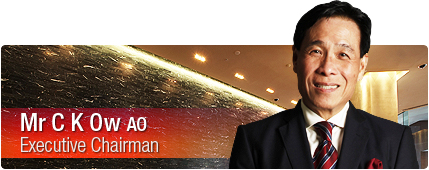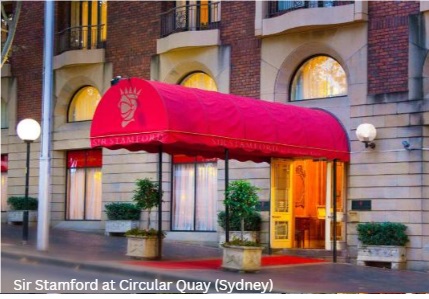| Stamford Land, a Singapore-listed hospitality and property investment firm, has come under the spotlight among value investors. Christopher Tay, an ex-equity analyst, published his take on his blog following a recent article by a NextInsight reader. Each applied a different set of metrics to evaluating the company’s worth and outlook, and holds a different investor sentiment. |
| Key Points from Christopher Tay's article |
Christopher says Stamford Land is potentially “the next Amara,” highlighting three main attractions: clear undervaluation, persistent insider buying, and a strong institutional holder in Morph Investments.
At the current stock price, the market is pegging Stamford’s 1,200 hotel keys (excluding the leasehold Brisbane hotel) at a price per key of just AUD100k—far lower than the AUD300k typical for hotels in Australia today, suggesting potential for significant upside.
Notably, the executive chairman (CK Ow) has been buying shares nearly every week since July, raising his stake from 42% to 46%.
With his daughter’s 11%, the total family control is 57%.
Christopher highlights Morph Investments’ status as top holder (at 18% of their portfolio since Q2 2023), which adds institutional validation.
And he teases: "Was it also happenstance that Morph was the 4th largest shareholder of Amara prior to their privatisation? :) "
However, he also cautions against overexuberance—the hotels are described as outdated and in need of capex.
Risks flagged include Stamford Land's poor track record on shareholder returns (low dividends, past minority shareholder lawsuit), and skepticism about whether value will be unlocked for minorities.
His conclusion is pragmatic: "All in all, I think anyone buying the shares will need to tan ku ku (wait long long in Hokkien) for the payout - this is a question of when not how."
| Key Points from reader article |
The narrative here is much more optimistic: Stamford Land is “cash-rich” with S$508 million net cash, nearly 81% of its market cap.
 The piece praises Stamford’s asset sales -- profitable hotel divestitures in Sydney and Auckland —and points to its current undervalued hotels carried at historical cost.
The piece praises Stamford’s asset sales -- profitable hotel divestitures in Sydney and Auckland —and points to its current undervalued hotels carried at historical cost.
The assets are described as a “strong moat,” and the leadership’s acumen is praised, with Chairman Ow described as having a talent for buying assets low and selling high.
Financial discipline is lauded, with virtually no debt, a high current ratio (14x), and rising profitability (FY2025 net margin up to 22.1%, ROE up to 3.8%).
While the article notes the low dividend yield and some operational risks (rising staff costs, currency volatility), its tone is optimistic.
The ongoing Queensland hotel redevelopment and the potential reversal of past property valuation losses due to falling interest rates are flagged as likely catalysts.
Insider buying and rising family ownership to more than 65% are interpreted as vote of confidence.
The investor sentiment can be summed as “buy and hold,” trusting management to unlock value over time.
ConclusionWhile both analyses agree Stamford Land is undervalued and management is buying shares, Christopher has a more guarded, critical tone—emphasizing risks and the need for patience, and warning that asset value may not benefit minorities readily.
The NextInsight reader, however, sees Stamford as a classic value opportunity: cash-rich, asset-heavy, conservatively run, and well-positioned for upside, suggesting investors “buy and hold” for long-term value creation.
|
||||||||||||||||
• Christopher Tay's blog post (The next Amara? Stamford Land) is here.
• NextInsight reader's article (STAMFORD LAND: This Company is Cash-Rich, Owns Undervalued Hotels, and Offers Margin of Safety) is here.
 For a hotel/property play with different dynamics see: BANYAN GROUP's Share Surge: Why Phuket Property Focus will Add More Fuel Ahead For a hotel/property play with different dynamics see: BANYAN GROUP's Share Surge: Why Phuket Property Focus will Add More Fuel Ahead |







